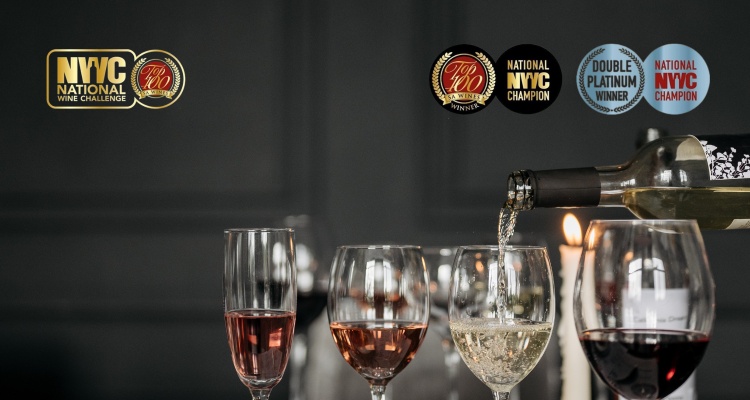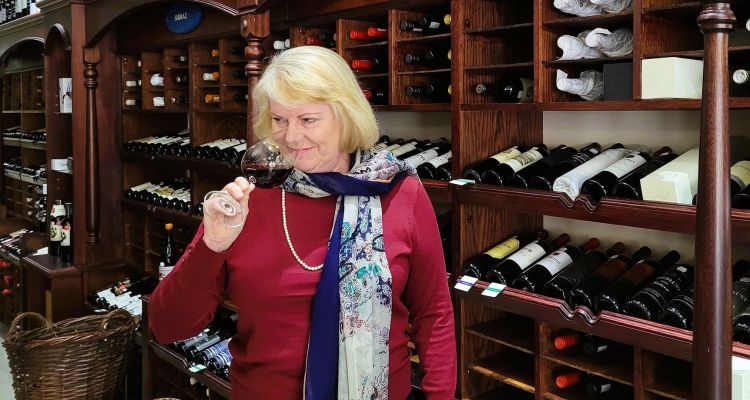The Cape South Coast, specifically the Agulhas Wine Triangle (AWT) is becoming increasingly important to wine tourism development in the area. A number of highly acclaimed wine brands that enjoy widespread recognition by the local and international wine industry are situated in this cool climate area. Wine media and wine enthusiasts are increasingly flocking to the Agulhas Wine Triangle to experience these authentic wines first hand.
There are several tourism facilities within the AWT, such as winery cellar-door facilities, self-catering accommodation establishments, wedding venues, hotels, restaurants, farmstalls, and various nature reserve, including the Nuwejaars Special Management Area.
Tourism and Agriculture were recently identified by the Western Cape Department of Economic Development and Tourism as the sectors with the greatest potential to accelerate growth and job creation. This process is called Project Khulisa.
The major concern is that if the prospecting licence, currently in process, is granted by the Department of Minerals and Energy, a mining right will follow. If mining takes place in the targeted area, food security, the destruction of the environment, the inevitable job loss (and social cohesion breakdown), potential destruction of sensitive palaeontological and archaeological sites, and negative impact on tourism-related businesses are inevitable, as witnessed in similar situations elsewhere in South Africa.
Farmers will not be compensated sufficiently, and judging from numerous similar mining operations, they (and probably their heirs) will not see remediation or rehabilitation in their lifetimes. Agricultural land values and the value of wine brands and other consumer brands associated with the area will plumet.
Looking at similar situations, further problems will also occur:
- The continual deterioration of the roads due to increased traffic of large trucks.
- The compromised safety of tourists making use of the roads.
- Mining activity and increased traffic results in air-quality deterioration and produces dust that settles on the leaves of the vines and prohibits photosynthesis. As a result growth of the vines and ripening of grapes will be negatively impacted. Grape production and quality will decrease. Other crops will be similarly affected.
As mentioned the AWT and its wineries are becoming an increasingly popular tourist attraction and destination. The visual impact of the proposed mine is of concern. Tourism to the area and it’s economic viability is of major concern, especially in terms of job security and business loss.
Currently 240 000 people are employed in tourism in the Western Cape. Wine- and Wine Tourism contribute R35 billion to the GDP. The greater Cape South Coast and in particular the AWT, which includes villages like Gansbaai, Baardskeerdersbos, Elim, Napier, Bredasdorp, Arniston and Struisbaai are part of this very dynamic and important industry.
Owner of Agulhas Wine Triangle member, Skipskop Wines, based in Napier, Jonathan de Thierry, is a geologist by trade, has the following to say about the potential of mining minerals in the AWT: “Personally I do not believe any economic gold mineral potential exists on the farms Cienth Pty Ltd have applied for (completely wrong geology and age of rocks). Generally, where there is economic gold potential on a property you will see historic workings of gold in quartz veins over time with numerous adits and pits. This is not the case in our area. In the 1870s a gold mining company was listed in London based on an adit dug close to Fairfield Farm. This was an early example of a mining scam and when I accessed the adit in the mid 1990’s and took samples of the vein they were chasing, the assay results were negative.”
Editors Notes:
Food security concerns
The initial area targeted for prospecting will mostly impact Renosterveld and Fynbos biomes (see more on the potential environmental catastrophe below) and high-potential grain and sheep land. The Overberg is the breadbasket of South Africa and the threat to food security is real. Orchards and vineyards will also be directly affected, but the majority of the agricultural land currently in question is high potential broadacre farming.
Wine Business and Wine Tourism impact
If a mining right is granted the impact on wine tourism and general tourism will be severe and immediately felt – no one wants to go wine tasting next to a noisy, loud, dirty opencast mining operation. If mining is approved the destruction of vineyard land and potential vineyard land could be massive because the prospecting area will inevitably be extended and will directly affect over 200 ha of vineyards, and indirectly affect many hundreds of hectares more, through ground water contamination, and air quality deterioration, etc. The knock-on devaluation of the land and the wine brands associated with this land will destroy livelihoods and jobs.
Job security and social impact
Just as concerning, as we have seen elsewhere in the Western Cape where mining applications have been successful on agricultural land, the result is severe job loss and a devastating breakdown in social cohesion. In our area this would be catastrophic because the area is already marginalised and poor. This will crush our agricultural community.
Environmental impact
From the Overberg Renosterveld Conservation Trust (ORCT) side, there are massive concerns regarding the application. The following inputs can be attributed to Grant Forbes, Conservation Manager of the Overberg Renosterveld Conservation Trust.
The application area includes renosterveld and Elim Ferricrete Fynbos, and both are very threatened habitats. Western and Eastern Rûens Shale Renosterveld are both listed as Critically Endangered, with only around 5% remaining in the world today. Elim Ferricrete Fynbos is listed as Endangered, also with around 5% remaining.
These vegetation types are listed Nationally as Critical Biodiversity Areas and Ecological Sensitive Areas that have to be protected. Given that there is so little remaining, these habitats are already under tremendous pressure – and as such, every fragment of remaining natural land matters. Even if renosterveld and fynbos isn’t directly removed via the mining operations, mining will impact on the health of the entire system – from the land to the freshwater ecosystems. Numerous threatened species have been recorded in these vegetation types, and they would be at risk should this prospecting application and follow-on mining rights get granted.
There are numerous other concerns related to water extraction from the mining operation. The impact of mining operations on air and water quality has been well documented. The rock ore contains sulphides which form sulphuric acid, and the effects of this are well known, with acid mine drainage running into river and underground water sources. Runoff from mining and prospecting sites will penetrate groundwater and end up in river systems. This means the Greater Overberg Region Groundwater is likely to be affected.
The Kars River system, is also one of the only sites left in the world where one can find thePseudobarbus sp. nov. heuningnes – an Endangered freshwater fish species threatened with extinction. A stable population has been found in the upper Kars River, just east of the prospecting site.
The Kars River also flows into the Heuningnes River, which mouths into the ocean at the CapeNature reserve, the De Mond Nature Reserve. This forms part of the Heuningnes Estuary, an internationally recognised RAMSAR site (a wetland site designated to be of international importance) . Rare bird species are dependent on this site for breeding and foraging. From a marine perspective, it is of great importance serving as a breeding and feeding ground for fish.
Ross Kettles, manager of The Nuwejaars Wetlands Conservation Area:
This conservation area of around 47 000 hectares close to the most southerly tip of Africa includes Zoetendalsvlei, one of biggest freshwater lakes connected to the ocean in southern Africa. The Kars River flows into Zoetendalsvlei, which then joins the Heuningnes River, and flows into the De Mond Nature Reserve (a RAMSAR site of international importance). The impact of water pollution on these critical freshwater habitats is very concerning. Entire communities downstream of the Nuwejaars Wetlands are also dependent on healthy water sources, with the towns of Struisbaai, Agulhas and Suiderstrand reliant on aquifers, which are connected to each other and to the Nuwejaars Wetlands via underground water systems.
These wetlands and natural systems include Critical Biodiversity Areas, while the NRNR is also situated in a recognised Key Biodiversity Area; and the Nuwejaars Wetlands themselves have been labelled ‘irreplaceable’ by the South African National Biodiversity Institute. These wetlands also represent around 16 000 hectares of National Freshwater Ecosystem Priority Areas. That means that activities that threaten our freshwater and our freshwater species must be fought. What’s more, agriculture is one of the biggest sectors in the Overberg, and the Agulhas Plain – also serving as one of the biggest sources of employment. Our farmers depend on these water sources for many of the agricultural activities, in a region known as the breadbasket of the Western Cape for its wheat farming. So aside from the biodiversity value, there are also threats to food security posed by this mining operation.
Application process
This is clearly a serious application by a well-funded and well-connected group. This is the 2nd application on the same land this year by the same applicant, Cienth Pty Ltd, after the previous Environmental Assessment Practitioner withdrew from the process. The consulting geologist retained by Cienth Pty Ltd., is the well-respected and highly experienced Minrom Group.
Legal perspective
Elsaine Rabie, the Environmental Lawyer retained by the Napier Farmers’ Organisation:
From a legal perspective in terms of South African legislation the following is noteworthy.
In terms of the Mineral and Petroleum Resources Development Act No. 28 of 2002 a prospecting right can be granted for an initial period of 5 years, with one renewal period of 3 years. Section 19 of said Act provides that a prospecting right holder has the exclusive right to apply for and be granted a mining right, which right can be granted for a period of 30 years at a time. Dependent on the quantity and/or concentration of the mineral deposits a mining right can be renewed numerous times, for periods not exceeding 30 years at a time. In my experience I have seldom ever came across a prospecting right, which does not progress to a mining right. If this happens, the landowners, farmers and even their descendants will not see rehabilitation in their lifetime, and no financial provision will be sufficient to fill the void left by mining activities.
The process in terms of South African environmental framework is mainly contained in the National Environmental Management Act No. 107 of 1998 and the Environmental Impact Assessment (EIA) Regulations 2014 (as amended). The timeframes for submission of the Draft Basic Assessment Report (DBAR), which report must contain amongst others the prospecting work program, specialist studies identified in the EIA Screening Report, and proof of technical and financial ability of the applicant, has already commenced upon the departmental acceptance of the application. The applicant’s environmental assessment practitioner (EAP) therefore has a limited period of time by which said report must be provided to all registered interested and affected parties, for a commenting period of at least 30 days. To date no party has received any information on the application, save for the departmental Section 10 notice, as well as the notice of application by the EAP.
What the public can do to learn more:
In order to ensure that this prospecting application is transparent and the public is properly informed, we urge everyone to register as an interested and affected party to this application, which can be done by emailing the new environment assessment practitioner, Mr. McDonald Mdluli of Lwethuma Environmental Consultants at info@lwethuma.com or by sending a message to +27 79 242 1312.













